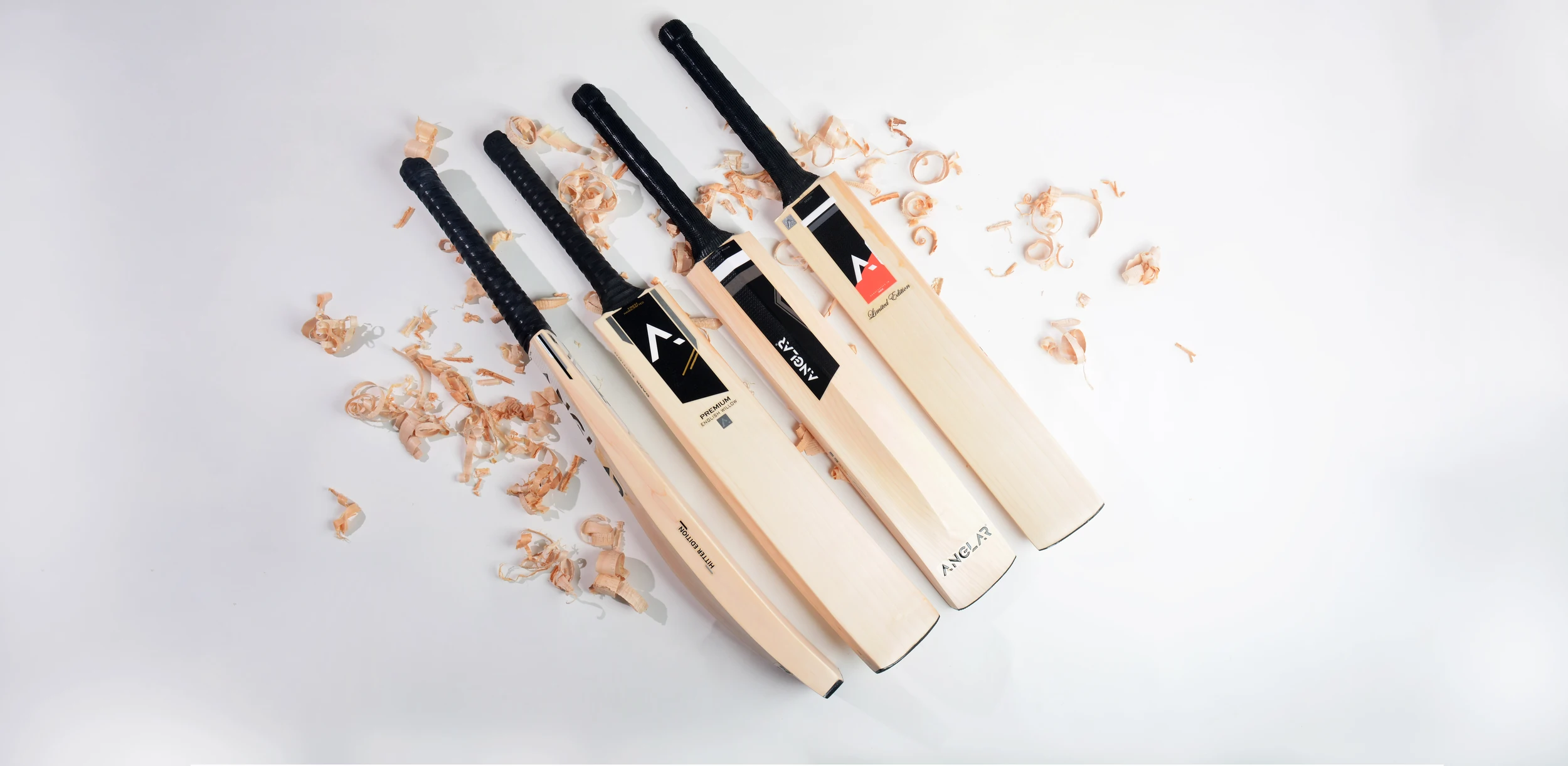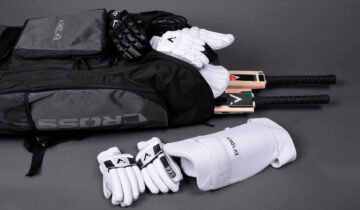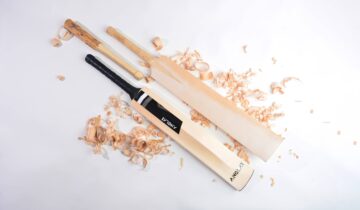Over time, the game of cricket has changed and so has the cricket bat. The thin piece of willow wood has grown several times its original dimensions. Before introducing the shorter format of cricket, striking boundaries and even sixes were challenging. However, those days are long gone. The credit should go to today’s cricket bats which enable a batter to smash more boundaries, and post big targets.
However, current-generation batters have more intent to hit boundaries as the game demands this from them. So,higher frequency of boundaries significantly contribute to high-scoring games.
But let’s put the latter factors on hold for now and concentrate on how the evolution of cricket bats over the past year has made power striking possible. Explore how power striking has been made possible by modern cricket bats.
Cricket evolved with time!
Before discussing contemporary cricket bats, let’s consider how blades have changed over the past year. The introduction of round-arm bowling in the 1820s had an even more significant impact on the bat’s form. With a little swelling, they were lighter. Finally, over-arm bowling was introduced in 1864, making the blades heavier and thicker. The bats eventually reached their current form as they grew larger and heavier. Both cricket and cricket bats have evolved. Earlier the skill of batting was more critical than hitting boundaries.
Better bats were required to master modern cricket, so they have improved. What, exactly, are the alterations with the bats? Let’s go over each of those adjustments separately.
Cricket bats in current times: Over time, the weight and centre of the cricket bats have been altered for enhanced batters’ performance. And these two significantly influence the blade’s ability to strike. The likelihood of hitting the ball out of the field increases with increase in the size of the middle or sweet spot. Also the heavier and sturdier bats have made stroke playing quite efficient for modern batters.
In addition, modern bats have sweet spots at their borders. To put it another way, the edges are so thick that they, too, are included in sweet spots where the balls can travel when they strike them. Additionally, the contours on today’s bat are ideal. All of the elements mentioned earlier and the science that supports them have made it possible for hitting to reach new heights of strength.
Therefore, it is no wonder that every batter seeks the best cricket bat with the perfect weight balance.
The structure of a cricket bat
- Sweet Spot: The cricket bat’s sweet spot, known as the centre, is typically located 7 to 10 inches from the toe. It is a feature of the cricket bat that allows players to strike the ball the furthest. To maximise it, people are still attempting to understand the physics of the middle. The sweet areas on modern bats are more significant and packed with wood. However, some bats have a sweet spot with a larger surface area than others.
- Weight: Power hitting has been made possible in part by the weight of the cricket bat, and it immediately affects the bat’s capacity for six hits.
The ball will travel farther after being struck if the bat is heavier. Additionally, today’s competitors adore using heavier bats. So, compared to earlier generations, they hit more sixes. However, using a hefty bat also has drawbacks. With heavier bats, it is harder to middle balls because moving the heavier bat takes more work.
- Bow: A cricket bat may have had a curve. This curve serves various purposes: balancing the bat, enhancing the finesse of different strokes, and expanding the sweet spot. Making certain shots more comfortable to perform is one of the curve’s most essential roles. Players can now take shots at angles that would have been difficult to assume otherwise.
A curve is advantageous because it expands the sweet spot region of the bat without adding to the bat’s weight. There won’t be a clear middle without curvature because the weight distribution and curve together give the bat the middle or the sweet spot. Therefore, bats without curves are common in competitive cricket. If the bat has less curvature or none, you can picture what you might be missing. If the thickness of the bat is uniform throughout its length, fast pace deliveries could crack it, perhaps in the toes. The toe of the bat, which has less wood than the rest of the bat, cannot withstand the kinetic energy of a quick projectile.
As a result, the toes are readily broken and, unsurprisingly, have no bearing on how shots are made.
Today’s bat makers are aware of the significance of the curve and its scientific basis. Modern bats have larger curves than older bats because of this.
The sweet spot and curve can also be moved upwards or downward based on the playing circumstances and the players. Some players prefer middles or a slight upper-side curve, while others prefer a low-toe curve. The curve, however, will be on the lower side on low-bounce pitches and the upper side on high-bounce pitches, depending on the playing circumstances. However, the hitting is unaffected by the location of the curve. What counts is whether or not there is a slope.
- Edges: Compared to earlier times, modern bats have thicker edges because thicker edges result in a wider sweet spot, improving the bat’s ability to strike. In addition to lengthening the centre, thicker edges also increase swing weight and performance without changing the balance of the bat. These explain how players like Josh Buttler or Kieron Pollard can strike sixes with just one hand or even if the ball misses the middle. The information mentioned earlier affects how well cricket bats strike. Each performer, however, defines weight, size, and curve in their unique way. Players typically do not use the same bat, especially at the international level. The manufacturers receive their specifications from them, and in response, the manufacturers create bats. For instance, hefty bats are used by players like Chris Gayle, MS Dhoni, and Andre Russell. Virat Kohli, on the other hand, prefers to use relatively lightweight bats.
Also, batters use various bats in distinct forms and playing circumstances. All those bats share the trait of never failing the player and allowing the batter to hit boundaries and sixes at will.
In addition to those already stated, some factors have made power-hitting possible. Even though this makes them unfit to compete in longer formats, the batters have become more robust. Without worrying about the size of the boundary, they can free some space. However, to maintain a level playing field for both bowlers and batters, the ICC has set regulations limiting the thickness of bats.
The custom cricket bat revolution
Custom made cricket bats are now challenging the traditional mass produced cricket bats that are made according to a fixed template for all players. Nowadays players are looking for a bat that is specifically designed and crafted for them according to their requirements. A custom cricket bat allows a player to customise the following things –
- Size of the bat
- Weight of the bat
- Sweet spot position
- Shape of the blade
- Handle type
- Handle thickness
- Toe shape
- Edge thickness
- Profile
So, with the above options you can clearly understand why custom made cricket bats are preferred by top rated players.
Conclusion
Cricket bats have unquestionably altered the sport of cricket. To answer the question which bat is best for power hitting a customised bat by best bat manufacturer in India is the answer.
One of the reasons batters clear boundaries without breaking a sweat, why teams can set those enormous goals, and, more importantly, why cricket has evolved into a fascinating sport is the modern bat. It follows that it is obvious to comprehend the significance of selecting the proper cricket bat. And once you’ve found the ideal item, you should be able to maintain it.
Keep visiting this place for more fascinating articles about cricket equipment and buying custom equipment from cricket store online India.












